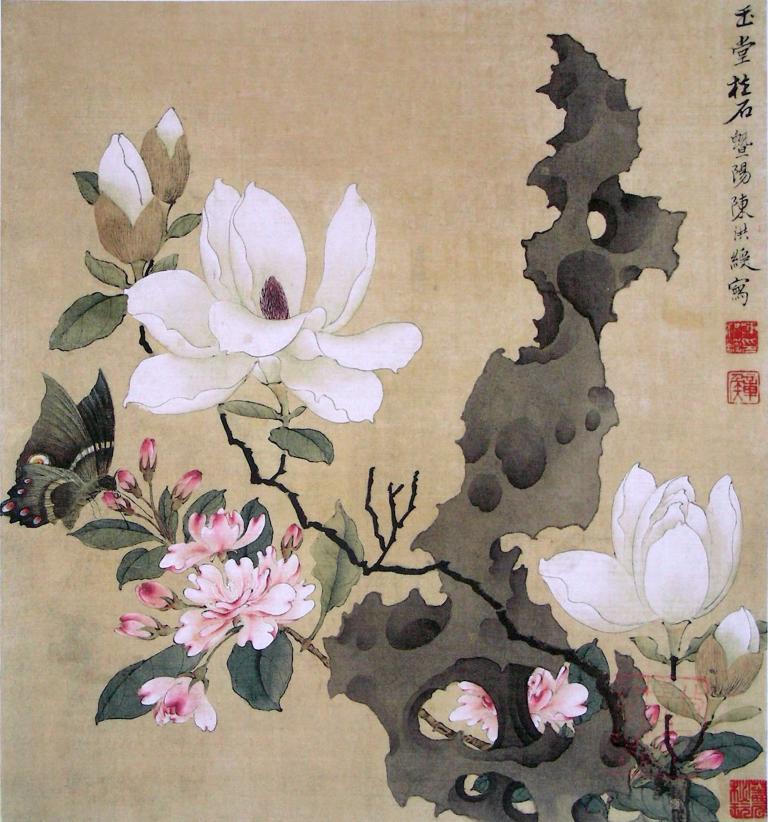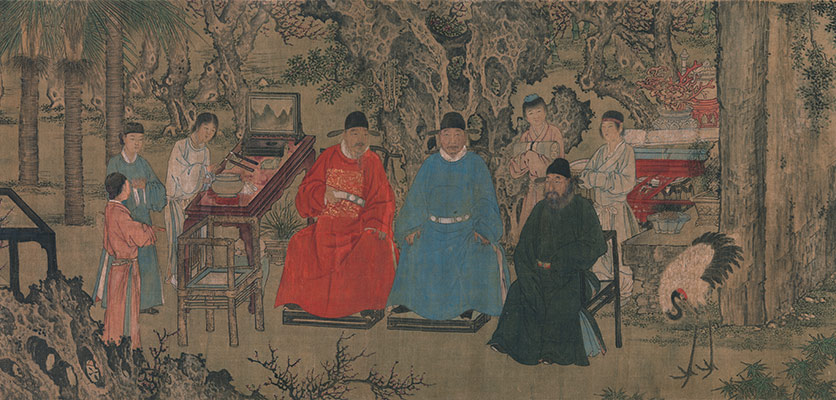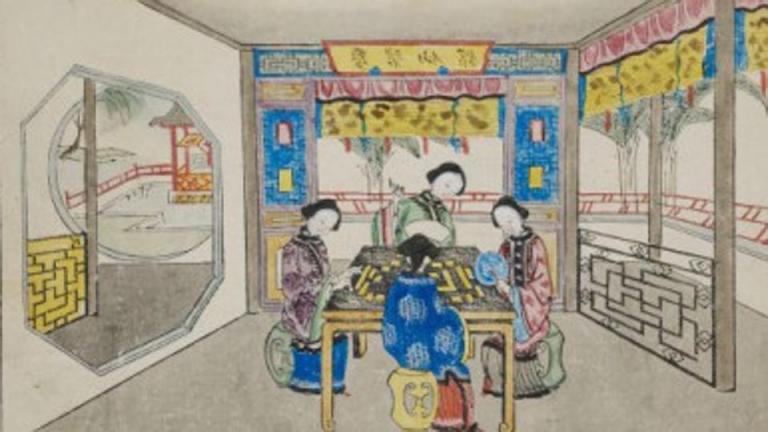Paintings of Various Schools in Ming Dynasty
5 min readCompared with previous dynasties,Ming dynasty had more variety of painting schools.At the beginning of this dynasty,although rulers did not set up officia.
art academy,they did gather painters for their services.Painters were bestowed with different titles including Expectant Official in Wenyuan Pavilion,Expectant Official in Wuying Hall,Commander of Imperial Bodyguard and so on.The painting works of these court painters were known as court style paintings in the painting history.Later there were Zhe School,Wumen School,Yunjian School and Susong School.Their painting work made major contribution to painting history of Ming dynasty.The major subject matters of their painting were still landscapes,flower-and-bird,and human figures,though different school had different preference.Since Wumen School in middle Ming dynasty,literati painting had become the main stream in the painting field.They inherited with diversification the literati painting tradition from Song and Yuan dynasties and formed the main stream painting style in Ming dynasty.

Landscape Painting
Landscape painting continued to be a main part among all kinds of paintings.
Most court style paintings at the beginning of Ming dynasty were landscape paintings.Some painters followed Ma Yuan and Xia Gui from Southern Song dynasty.
They were good at using water and ink to project the image of landscapes.They used brush pen in an imposing way.The neat formation and simple arrangement endowedtheir paintings with high expressive power.Some painters followed the blue and green painting style from Northern Song dynasty and adopted a meticulous painting style.Court painting of landscape was represented by Xie Huan,Wang E,etc.Zhe school landscape painting also followed the court painting of Southern Song dynasty,yet their style was freer and simpler.They used the brush pen in a bolder and more unconstrained way,and used ink color more freely.
The painting style was bold and dynamic.In middle Ming dynasty,Wumen School became popular in the painting field.Most painters in Wumen School were literati highly cultivated in literature.They were good at poetry,prose writing and calligraphy.Their painting style followed the four great painters in Yuan dynasty,namely Huang Gongwang,Wang Meng,Ni Zan and Wu Zhen,and the earlier painters such as Dong Yuan and Ju Ran.They painted just for entertainment and the expression their emotion.Although some painters in Wumen School,Qiu Ying for example,lived on painting,he was influenced by literati painting and adopted the particularity and poetry in his paintings.In later Ming dynasty,there were Susong and Yunjian painting schools.Both schools were influenced by Wumen School.The famous painters in the two schools include Dong Qichang,Chen Jiru,Song Xu,Shen Shichong and Zhao Zuo.Dong Qichang was the representative.At the same time,Lan Ying led the Zhe School with his landscape painting and was considered as”the Last of Zhe School”.
Famous painters of landscape painting in Ming dynasty were as follows:Wang Li(1332-?),with courtesy name Andao,entitled himself Ji Sou or Aged man enjoying loneliness.He was born in Kunshan(Jiangsu today).He was a famous medicinal expert in early Ming dynasty,and really learned in classics and historical books.He was highly cultivated in art.After his work as a doctor,he devoted himself to painting and finally became a famous painter.His works Paintings of Huashan Mountain include 40 paintings,which depicted his view of Huashan in the most delicate way.The 40 paintings were really masterpieces in ancient landscape painting history. He also demonstrated his artistic view in the preface of the paintings.
Dai Jin and Zhe School: Dai Jin (1388-1462) was born in a painting worker’s family. He first learned to be a silver jewelry maker, and later started to learn painting. He became so well known that he was called to be a court painter. However, as he painted in Fishing Alone in Autumn River a fisher man in vermilion color, which was the emperor’s color in Ming dynasty and forbid to use by common people, so he was driven out of the court and lived a vagrant life on painting thereafter. Dai Jin was versatile in painting. He could paint well landscape painting, figure painting, flower-and-bird painting, especially landscape painting. Under his influence, painters like Wu Wei, Zhang Lu were also good at landscape painting and figure painting. They learned from Ma Yuan and Xia Gui, as well as other painters in Song and Yuan dynasties. Thus their paintings were with various characteristics.

Their paintings represented the development level of painting in early Ming dynasty.
As Dai Jin was born in Qiantang, Zhejiang (Hangzhou in Zhejiang province today), thus the painting school were known as Zhe School in painting history.
Shen Zhou and Wumen School: Shen Zhou (1427-1509), with courtesy name Qinan and a title Shitian, was born in Changzhou (Suzhou in Jiangsu today), the same birth place for later painters Wen Zhenming (1470-1559), Tang Yin (1470-1523) and Qiu Ying. Suzhou was known as Wumen in ancient time, so they were known as Wumen painting school, also as the Four Greatest Painters in Ming dynasty. They were highly cultivated yet had no interest in politics, so they devoted themselves to painting. Some of them were professional painters, but their painting style and pattern were close to literati painting. They excelled in landscape painting, flower-and-bird painting and figure painting, but were most influential with their landscape painting. They had inherited the painting style from Dong Yuan, Ju Ran and the Four Greatest Painters in Yuan dynasty. They also learned from nature and created their own characteristics. Their painting style influenced the following painters greatly.
Dong Qichang(1555-1636), with courtesy name Xuanzai and the title Sibai or Upasaka of Xiangguang, was born in Huating (Songjiang in Shanghai today). He had served as minister of rites ministry in Nanjing and been the teacher of the crown prince. Dong Qichang was good at calligraphy and painting. As one of the greatest calligrapher in Ming dynasty, he also excelled in landscape painting. He learned from paintings of Dong Yuan, Ju Ran, Huang Gongwang and Ni Zan and was good at using the brush pen and water ink. He used the skills of light ink strokes, brush, dot and tincture together and made his painting full of diversity. He used bright ink color and constrained strokes. His paintings had different colors like viridity, light crimson and water ink color. They were warm but not glowing. The new artistic conception revealed the aesthetic taste of the literati. He advocated for literati painting theoretically and pointed out that paintings should be divided into Southern school and Northern school. He thought highly of Southern painting but not Northern painting, which was a very influential view in painting history. His representative painting works were Zhoujingtang Villa and Landscapes left to us today.









